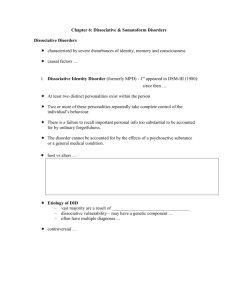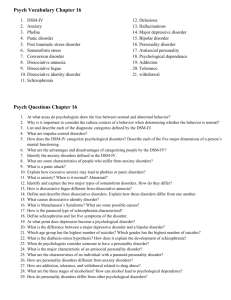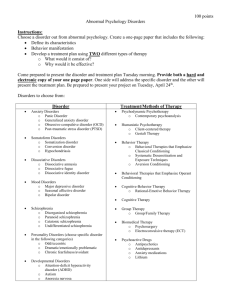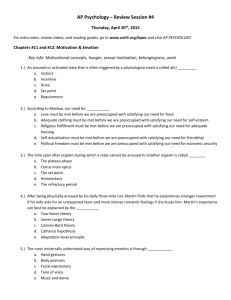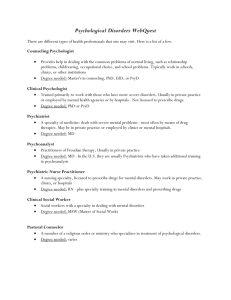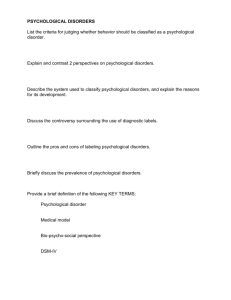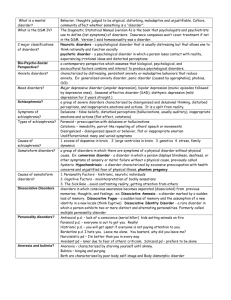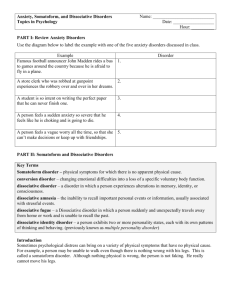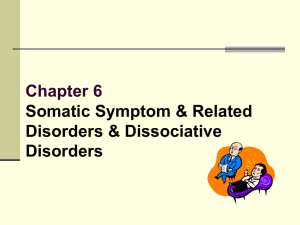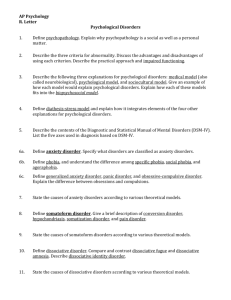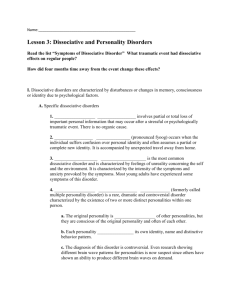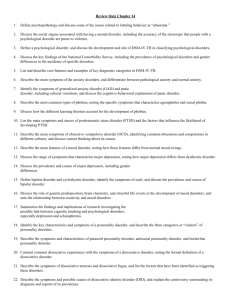Major Psychological Disorders
advertisement
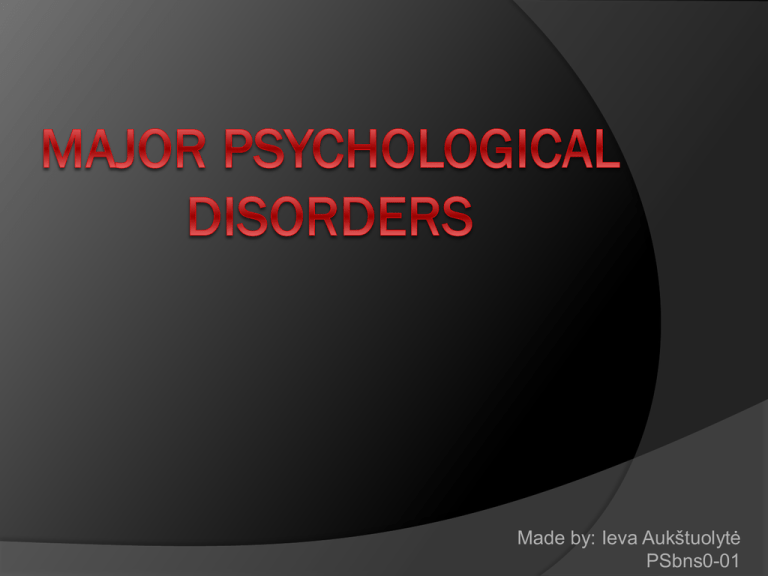
Made by: Ieva Aukštuolytė PSbns0-01 Content Anxiety disorders Somatoform disorders Dissociative disorders Mood disorders Schizophrenia Personality disorders Anxiety disorders 1) Phobic disorder 2) Panic disorder 3) Generalized anxiety 4) Obsessive - compulsive Somatoform disorders Somatoform disorder is the name for a group of conditions in which the physical pain and symptoms a person feels are related to psychological factors. • Hypochondriasis • Conversion disorder Dissociative disorders Dissociative identity disorder (DID) – a disorder in which a person displays characteristics of two or more distinct personalities. Dissociative amnesia – a disorder in which a significant, selective memory loss occurs. Dissociative fugue – a form of amnesia in which the individual leaves home and sometimes assumes a new identity. Mood disorders Major Depression Mania Bipolar disorder Schizophrenia Schizophrenia is a mental disorder characterized by a disintegration of thought processes and of emotional responsiveness. Common Symptoms Faulty perceptual processing Disorganized thinking Emotional distortions Delusions and hallucinations Withdrawal from reality Bizarre behavior and disturbed speech Disturbed sense of self Causes of Schizophrenia Role of heredity Biochemical and Neural mechanisms Role of environment Personality disorders Antisocial personality disorder – a disorder in which individuals show no regard for the moral and ethical rules of society or the rights of others. Borderline personality disorder – a disorder in which individuals have difficulty developing a secure sense of who they are. Narcissistic personality disorder – a personality disturbance characterized by an exaggerated sense of self-importance. Conclusion There are many major psychological disorders that can affect people. All major disorders share one thing in common: those suffering from a major psychological disorder have significant challenges with everyday life. Understanding these disorders builds an appreciation for what these people go through on a daily basis. References Robert S. Feldman – Understanding psychology; Linda L.Davidoff – Introduction to Psychology. http://www.medterms.com/script/main/art.as p?articlekey=12229; http://en.wikipedia.org/wiki/Dissociative_dis order; http://en.wikipedia.org/wiki/Schizophrenia; http://www.ehow.com/about_6260512_majo r-psychological-disorders.html; 2011-02-20 Picture references: http://2.bp.blogspot.com/_EmF3lllsNIY/R1AMsgeBEPI/AAAAAAA AABk/2CEpdDtSCLY/s1600-R/HRLG_DogPhobia.hlarge.jpg; http://embracelife.deviantart.com/art/Generalized-anxietydisorder-183976078?qj=1&q=boost%3Apopular+anxiety&qo=466; http://fineartamerica.com/featured/-duality-cameron-limbrick.html; http://www.huffingtonpost.com/dr-orin-levine/questions-asmileposts-of_b_448870.html; 2011-02-19 http://allwomenstalk.com/10-signs-someones-obese/ ; http://www.topnews.in/depression-associated-desire-be-famous2133371; http://askville.amazon.com/SimilarQuestions.do?req=spousepartner-high-maintenance; 2011-02-21 Everything was found on 18th of February, 2011 Thank you for your attention Any questions?

